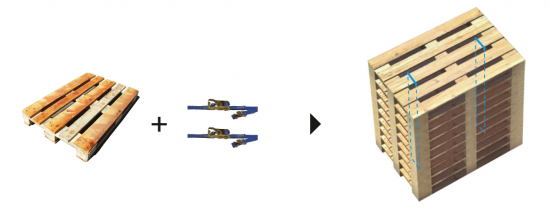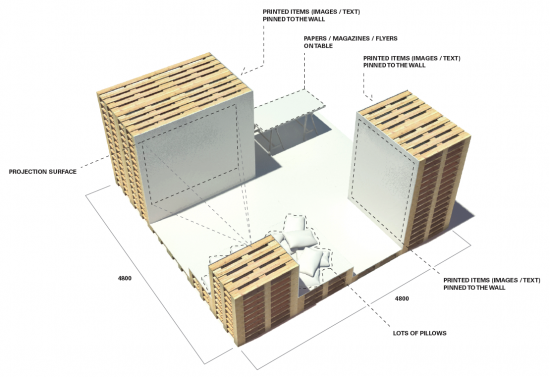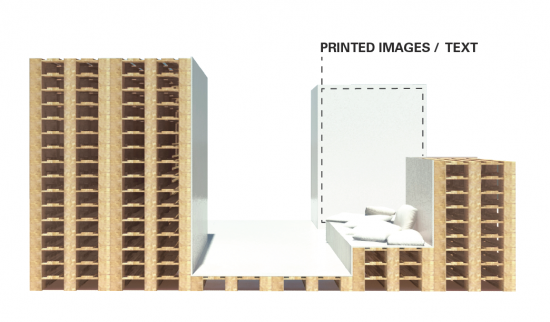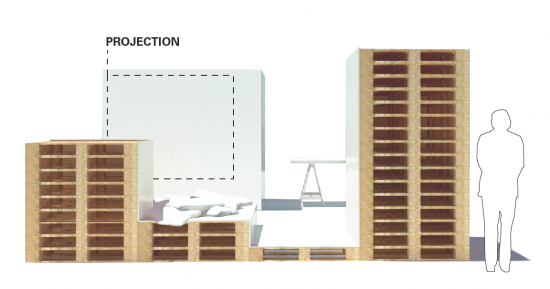About a month ago, we were asked by the Cities the magazine people if we could design a small exhibition space for them. They were trying to get accepted into an event held by the European Year of Creativity and needed a proposal for an exhibition space that showed that they meant business.
They got accepted, but sadly there wasn’t any need (or money) for the proposed space.
Now, unbuilt architecture is always a very sad thing, so we thought that if we posted it here perhaps someone else might find some use for it. It’s very low budget, so if you don’t have a lot of money but need an exhibition space, this is what you do:
First, call a supplier of cargo pallets (usually there are some at the outskirts of every major European city). Cargo pallets are interesting because they exist in a constant flow. Either being trafficked around, to or from the recipients of various merchandise, or stacked in some warehouse. In order for the logistics industry to have quick access to pallets there is always a surplus of them and as they deteriorate they get downgraded through a system of different classes based on their quality, being constantly reused. So if you ask a supplier of pallets nicely, he or she might let you borrow some for free as long as you hand them back unspoiled.
Otherwise they can be bought and sold back at a difference of ca 3 euros / pallet and that still makes them pretty cheap.
We’re going to use the pallets as the basic building block for the space. They can be stacked in lots of different ways and what you’ll eventually end up with depends, of course, on what kind of space you need. We wanted large wall areas for projections and printed images, but also some kind of “lounge” feature as well as the flexibility of a simple table and perhaps some folding chairs.
Once you stacked the pallets into a topography that pleases you, strap them together using cargo straps. This fixes the pallets into position and makes the stacks very stable. Do it right and the straps will be almost invisible from the outside.
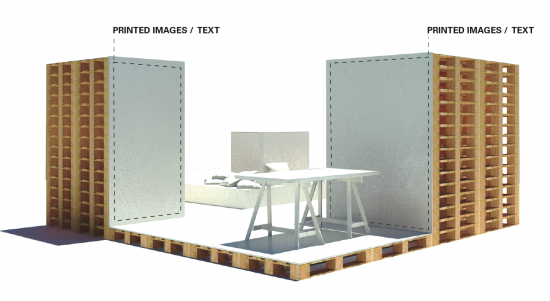
When the pallets are strapped, the inside needs to be clad with some boards. What kind of material you choose depends once again on the purpose of the topography. Usually some kind of plywood or particle boards will do just fine. Cheaper boards will wear more rapidly so the type you want will depend on how long the topography will be used. The boards are then screwed to the pallets.
You can now paint the space in the color of your choice (or just leave it if you like the look of it). We went with white since it’s neutral and good for projections. We also left the outside naked, with the pallets exposed.
Remember; don’t paint the pallets. This will make them worth less when you sell them back.
Here are the cost estimates for our space:
(in euros)
Euro-pallets x 128 = 400
Plywood/Particleboards = 200
Cargo straps x 10 = 150
Paint (4 cans) + Brushes = 150
Ikea table = 42
Pillows x 30 = 90
+ transports + extra
TOTAL = ca 1500

